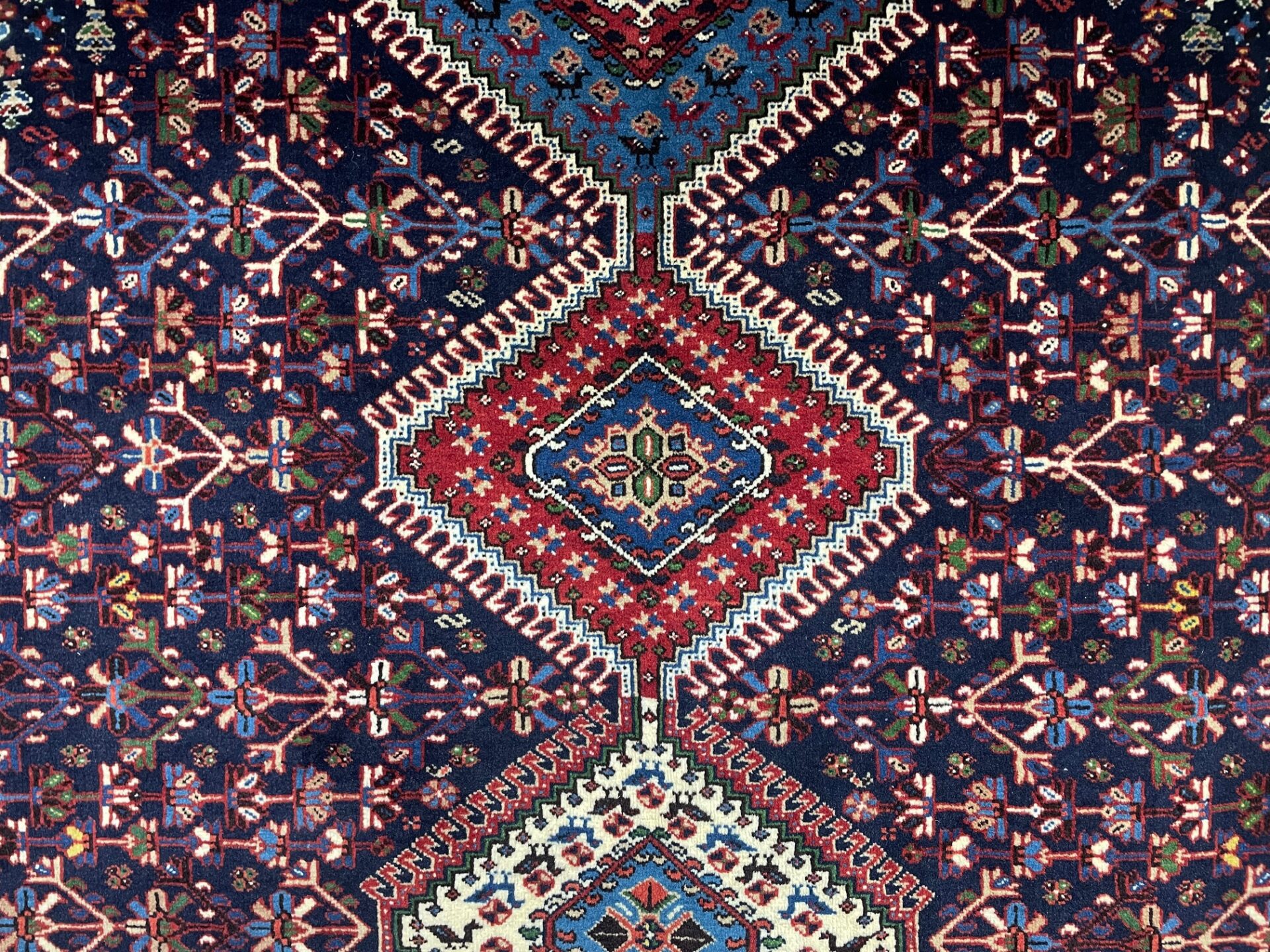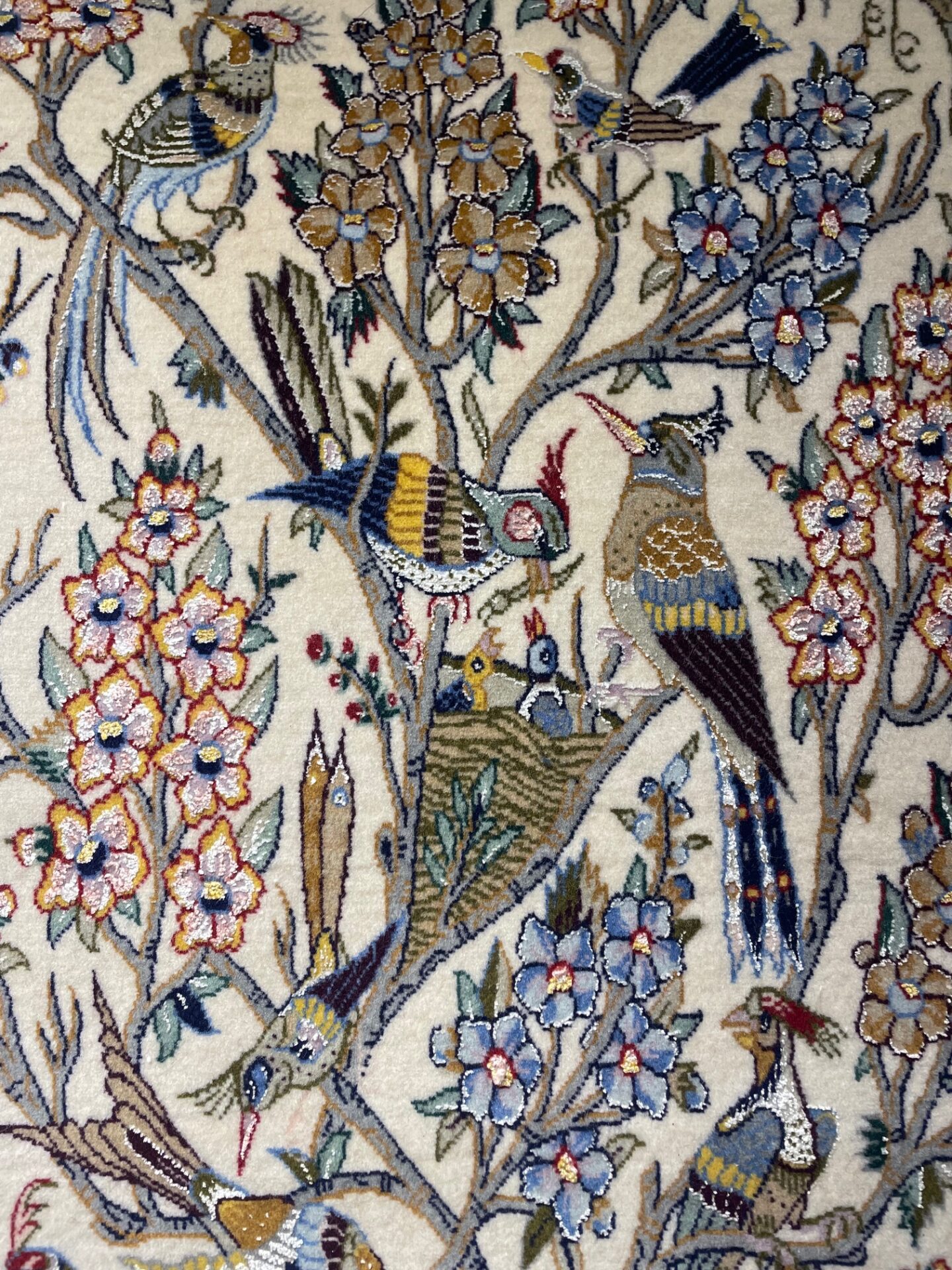Persian and Oriental Rugs
At Boft, we specialize in Persian rugs and think they are the best carpets money can buy. But don’t just take our word for it: of the top ten most expensive rugs ever sold at auction, only one was made outside of Iran (a Turkish piece at number 6); the rest are all Persian.

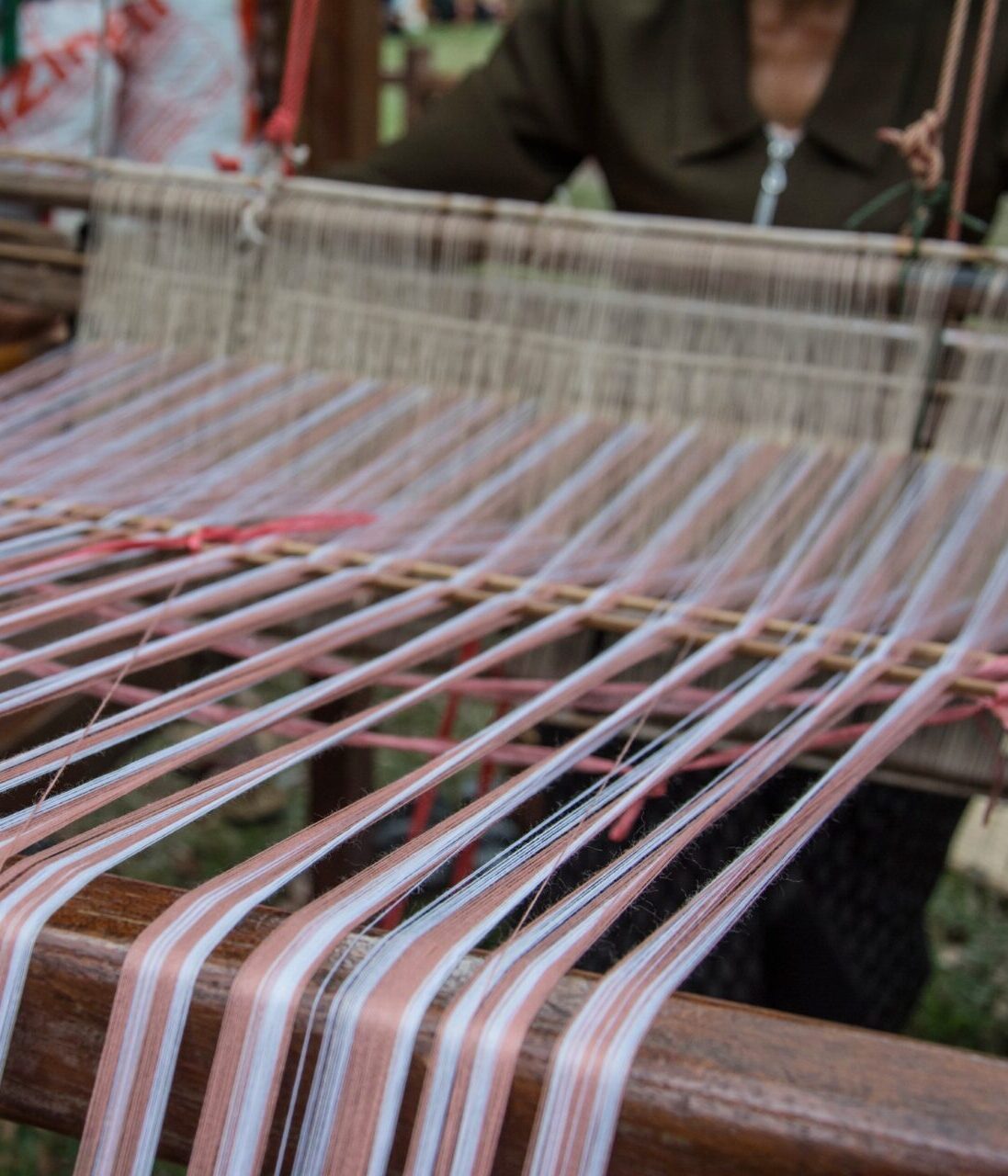
A History of Rugs
And where did this artform begin? It’s most likely that hand-woven rugs originated among nomadic pastoralists and their sheep. For this reason, scholars attribute a likely origin to the Iranian Plateau (a region from the Zagros Mountains to the Indus River and from the Caspian Sea to the Persian Gulf). Wherever it all began, weaving eventually spread across a large territory, extending from Turkey and North Africa to Central and East Asia, where many cultural groups adopted it, and where it continues to this day.
Read More
Patterns in Rugs
The most common symbols in rugs draw on fauna and flora. Take, for instance, the floral designs ubiquitous in city carpets. In a broad sense, floral designs represent spring, rebirth and fertility. But each flower also bears meaning. The lily stands for purity, the lotus for rebirth and the peony for power.
Animals also provide a wealth of inspiration in carpets. The ram symbolizes virility and protection. He is sometimes drawn in full, more often only with the image of a ram’s head. His presence may not be obvious at first, as the ram’s head can be concealed within a flower or the scrolling vines present in some patterns. In fact, many floral motifs are more than what they first appear to be, often producing additional layers of pattern indicating crowns (symbolizing the kingdom of Persia), bees or peacock feathers, for instance.
Read More
In tribal and village pieces, scorpions are very common. The scorpion is admired for never surrendering and symbolizes honour and strength. Butterflies are used in both tribal and city rugs and, much as in the West, represent transformation and beauty.
The elephant footprint is one of the most well-known rug designs. It was originally woven by the Turkeman tribe, though some Balouch weavings also use this motif (it is also reproduced in Pakistan as a Bokhara rug). The Silk Road crosses through the heart of Turkeman territory: naturally, this meant that Turkeman men would often travel on long trade journeys. And, as the story goes, the woman left behind would weave a rug with an elephant’s footprint, wishing for her husband or brother’s step to be as strong as an elephant’s on his travels.
In Persian culture, fish symbolize prosperity and are a popular New Year’s (Nowruz) gift. The fish design is rendered in carpets with fish swimming in four directions, representing infinity. So, a rug with a fish design is all about infinite prosperity—not bad!
Of course, some patterns are less poetic and more directly informational. For instance, the mother and child paisley design is comprised of a small paisley nestled within a larger paisley. It is traditionally woven by women expecting a child. And shepherds such as the Qashqa’i and Lori often weave goats into their rugs as a marker of their livelihoods.
These are just some of the symbols common in rugs! Kilims have their own symbolic lexicon. We love sharing our knowledge of carpet patterns and welcome you to visit us in our shop to learn more.
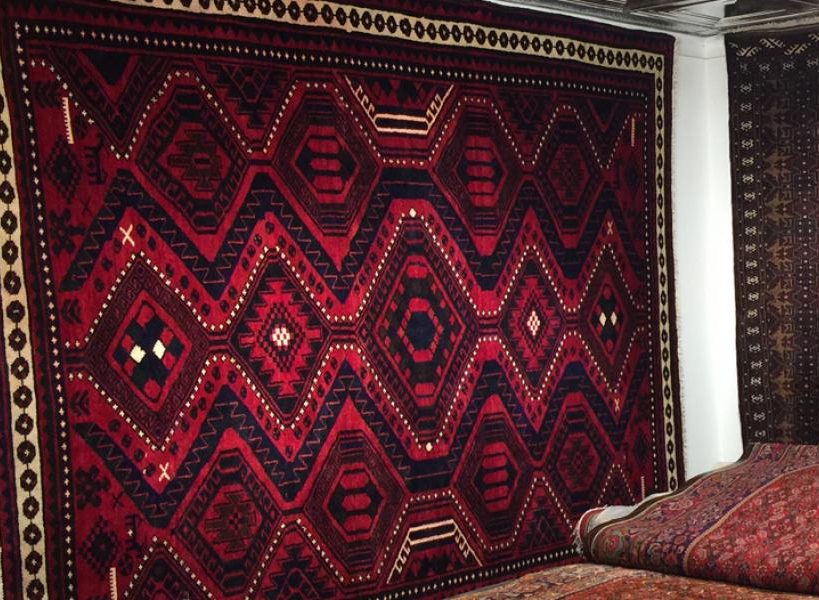
Real Silk Rugs
On top of this, many people are concerned about the authenticity of a rug. This is especially concerning if you are trying to purchase a real antique (not just some beat-up-looking, acid-washed rug), a genuine Persian rug (and not a copy made in Turkey, India, Pakistan, or China), or a pure silk rug.
Real or Mulberry Silk
Harvesting silk is an ancient and laborious practice that typically involves boiling the cocoon to kill the silkworm and then unwinding the fibers, which are later plied together and spun into silk yarn.
Though delicate, mulberry silk has remarkable tensile strength and offers very good durability when woven into a carpet. Silk rugs are also stunning. Silk offers a rich depth of color while providing an ethereal luster. The beauty of a real silk rug is not just in the material; the best silk rugs are superbly woven. All this finesse comes at a price. Fine silk can easily cost 20 times more than a wool rug. If you are considering that kind of investment, you want to know that the rug you’re looking at is exactly what you think it is.


Artificial or Art Silk
This often means mercerized cotton (cotton fibers treated and polished to a high luster) or viscose. It’s not that artificial silk is intrinsically bad. It’s just that the whole point of using artificial silk in a rug is that it’s much cheaper than real silk.
This is not a problem if you know the rug you are considering is made of artificial silk. But it’s not nice when a cheaper, artificial silk rug is misrepresented and sold as the real thing.
How to Identify a Real Silk Rug
First of all, fake silk carpets are most often sold in tourist markets in Turkey and India, online and at traveling close-out auctions held in hotels (you know, the ones that advertise a bankruptcy sale). Unfortunately, some brick-and-mortar dealers sell these too.
If you want the real McCoy, only buy from a reputable dealer (for instance, there is this store called Boft, in Inglewood) who will guarantee in writing that you are purchasing a real silk rug.
Read More
What exactly do you want to see in writing? The world’s top producer of silk carpets is the city of Qum in Iran. If what you are looking at is a Qum silk, the dealer will call it just that. If the seller calls the rug a Qum design, that means the rug was not made in Qum but is a copy of a pattern originating from Qum. The rug may be a copy made of real silk or artificial silk.
For the sake of argument, let’s say you’re looking at a tightly woven, finely detailed “silk” rug with what appears to be a real silk fringe. Are you looking at a rug made of artificial silk? Here are three tests that might help you distinguish real from fake.
Rub it! You can tell real silk from artificial silk by vigorously rubbing the pile with your open palm. The real silk warms up. The artificial silk rug stays cool to the touch. Of course, it helps to have a real silk rug with you so that you can compare a known quantity!
Burn it! This is at least good theatre and can be helpful. Clip off a small piece of fiber. Hold the sample with scissors and burn it with a lighter, not a match. Look at the ash and smell the smoke. If the material is viscose or rayon, the ash will be soft and chalky, and the smell will be like burning paper. If it is real silk, the burning sample will ball into black, crispy ash, and the smell will be of burning hair (you’re burning protein, the same stuff your hair is made of). Please do not ignite yourself or the rug dealer’s shop!
Dissolve it! The most accurate test chemically differentiates protein from cellulose or petrochemicals. One such test: mix a solution of 16 g copper sulfate and 8g glycerine in 150 cc of water at room temperature. Add caustic soda until a clear solution is obtained (about 1 tbsp). This solution will dissolve a small sample of natural silk but will leave cotton, rayon, and nylon unchanged.
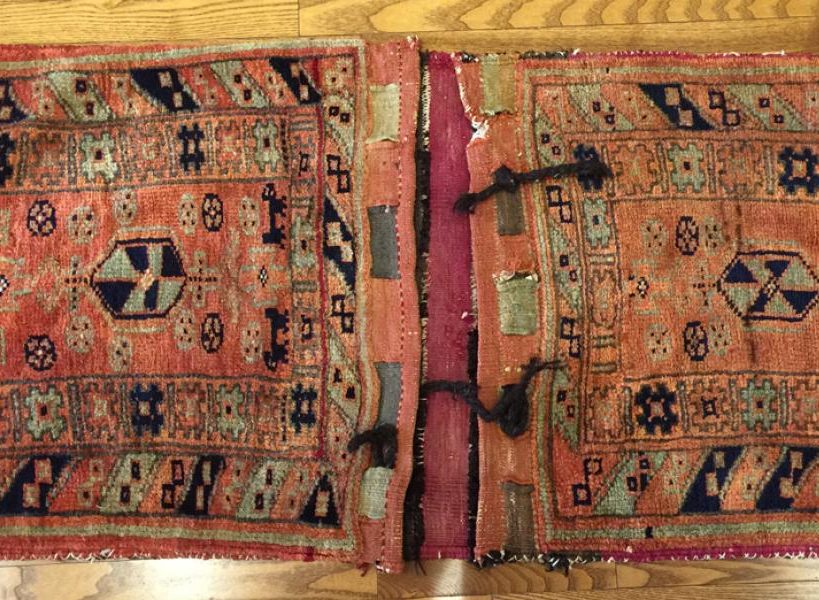

Rug Dyes
When discussing hand-knotted rugs, there are three dyes to consider: vegetable (plant and insect dyestuffs), chromic (synthetic or natural-based), and aniline. Aniline dyes are most commonly found in rugs from Turkey, Afghanistan, and Morocco. They are junk! Period. The colors will run and fade, and I would not consider purchasing a rug made with them.
Now, there are several points to consider when comparing chromic and vegetable dyes. A chromic dye may begin with either synthetic or natural dyestuffs. Chromic refers to the mordant potassium dichromate. A mordant aids in colourfastness (binding the colour to the wool). Most vegetable dyes also use a mordant, which is only found in nature and not in a laboratory. Examples include iron, salt, vinegar, and urine (yep, that’s right!). Although there is a widespread belief that pure vegetable dyes are superior to chromic dyes, it is truly not as simple. Some natural dyes are much more fugitive in color or even damaging to the wool than the synthetic dyestuff that yields the equivalent shade.
Read More
Moreover, it is usually not possible to neatly categorize carpets as natural or chronic (synthetic or otherwise). Weavers typically use conveniently available materials, which may include vegetable reds and chrome-synthetic greens used within the same rug. To further complicate matters, indigo, one of the best-known and most commonly used vegetable dyes, is also made in a synthetic counterpart chemically identical to the natural plant dyestuff!
However, bear in mind that the colours in vegetable-dyed rugs will patina (a fancy way of saying they will change and lighten, at least somewhat) over time. They are also much more likely to abrash (show uneven changes in colour saturation). Some vegetable dyes, such as the black typically used in Balouchi and Turkish rugs, can be so corrosive to the wool that we find old rugs in excellent overall condition but with almost no nap in the dark areas of the pattern.
On the other hand, chrome dyes have the advantage of being extremely colourfast (little or no fading will occur, even over centuries), and a chromic dye will generally colour wool more evenly (with less chance of abrash) and provide a richer, more saturated tone. When made from synthetic dyestuffs, chromic dyes can produce colours not readily found in nature. The result can be some outlandish colours that make the rug garish. Sometimes, however, the wild colours possible with chromic dyes make for an interesting rug. We have had some Bidjar carpets from the 1960s in turquoise, hot pink, and plum. A rug like that may not be to everyone’s taste, but when placed in the right room (with steel and white leather, for instance, or super MCM with Danish teak), these rugs look spectacular. Some synthetics replicate vegetable dye colours so convincingly that without chemical analysis, it’s nearly impossible to tell the source of the dyestuff.
In short, when discussing vegetable or chrome-dyed rugs, there is nothing inherently better about one or the other, though there are pros and cons attached to each. When considering the dyes in a rug, I certainly wouldn’t insist on anything beyond the dyes being of good quality, producing pleasing colours and maintaining overall balance in the pattern.
And now, if you’ve ever wondered what vegetable dyes might be used in a rug and how colours are achieved, here is a quick overview.
Common Vegetable Dyes
From a relatively limited range of natural colours, dyers use two techniques, depleted dye baths and double-dyeing, to produce many colours. When a batch of dye is made, the wool in the bath first absorbs the most intense colour. Subsequent dyeing in the same bath produces weaker shades of the same colour.
Vegetable Dyeing Techniques
By combining colors (or double-dyeing), dyers can produce different hues. There are, for instance, very few vegetable sources for green dyes (most green plants simply cannot be turned into good dyes). However, dyeing wool blue and then dyeing it again with yellow will produce a green color. If you look closely at a vegetable-dyed rug, you will commonly see that the color is slightly uneven (a green, for instance, that is more bluish in some sections and yellowish in others). This is because of the double-dyeing technique.
So, by employing depleted dyes and double-dyeing, dyers can produce a surprisingly large palette of colors.
Child Labour
That is not to say that child labour isn’t a concern when dealing with hand-knotted carpets. Customers are right to be worried about child labour and to inform themselves so that they can make mindful purchasing decisions.
First, when discussing child labour we think it is important to distinguish between children contributing to the making of a carpet by performing family chores and children made to work on a carpet to the neglect of their education and childhood. In most rug-weaving regions, children are expected to help their parents and support the family, like farm kids in the West are expected to help with the chores.
Read More
When children are expected to contribute to the household economy by doing work appropriate to their ages, we don’t think it is fitting to view it through the lens of child labour. For instance, in Iran, a youngish boy (say 9 or 10) who is going to school will likely also help to tend to the sheep whose wool is used to make yarn for carpets. In Iran, a girl of 14 or 15 may learn to weave a carpet alongside her mother. She or her mother will certainly weave a rug that will form a part of her dowry before she is married. Weaving learning at home is a specialized skill that can produce a cash income for the weaver. In Iran, where carpet weaving is still a cottage industry (i.e., work done at home), there is no opportunity for the exploitation of children through child labour.
In all other weaving countries, hand-made carpets are produced in workshops or factories. As expected, labour conditions vary greatly from factory to factory, and some factories utilize child labour. This is an evil practise that we do not support. One of the reasons we travel to all the places that we buy rugs from is that it gives us a chance to see the conditions under which the carpets are being made (the other main reason is that the closer we get to the loom, the less the rug costs our customers!).
We do all we can to ensure that our rugs are produced under the best possible conditions. However, no carpet factory will remind someone of a Ford factory in North America. Working conditions are different, and workers have fewer rights. In contrast, a weaver in Iran works at home and at his or her leisure. If buying an ethically produced carpet is your utmost concern, we strongly encourage you to consider a Persian (made in Iran) rug. In a global economy where most of what we consume in the West is mass-produced very far away, we take pride in supporting one of the few remaining cottage industries.





